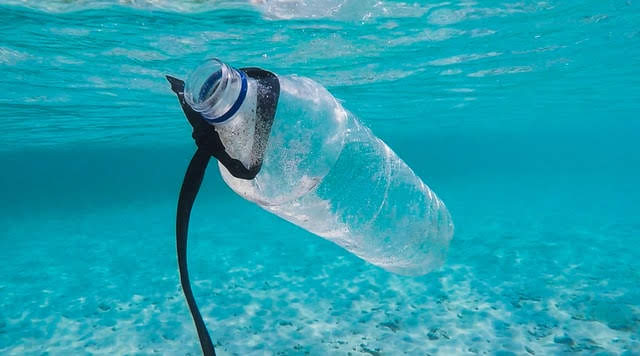‘this article is from Globalcitizen.org – see article here‘
1. Since the 1950s, around 8.3 billion tons of plastic have been produced worldwide.
According to a report from the Guardian, an estimated 8.3 billion tons of plastic have been produced since the 1950s — that’s equivalent to the weight of more than 800,000 Eiffel Towers.
And only 9% of it has been recycled.
2. In some parts of the world, using plastic is already illegal.
Kenya introduced one of the world’s toughest laws against plastic bags in 2017. Now, Kenyans who are caught producing, selling, or even using plastic bags will risk imprisonment of up to four years or fines of $40,000 (£31,000).
Other countries that have banned, partially banned, or taxed single-use plastic bags include China, France, Rwanda, and Italy.
You can find about other countries and cities that have brought in extraordinaryplastic bans here.
3. 73% of beach litter worldwide is plastic.
According to National Geographic, 73% of all beach litter is plastic.The litter includes filters from cigarette butts, bottles, bottle caps, food wrappers, grocery bags, and polystyrene containers.
4. A million plastic bottles are bought around the world every minute.
A report by the Guardian found that 1 million plastic bottles are bought around the world every minute, and this number is set to increase by another 20% by 2021 if we don’t act.
The same report said more than 480 billion plastic drinking bottles were purchased in 2016 across the world — up from 300 billion a decade ago.
Additionally, less than half of the bottles purchased in 2016 were recycled — with just 7% of those collected turned into new bottles, and the rest ending up in landfill sites or the ocean.
5. Worldwide, about 2 million plastic bags are used every minute.
This might seem like an unbelievable number, but according to Ecowatch, between 500 billion and 1 trillion plastic bags are used worldwide annually.
New Yorkers alone use 23 billion plastic bags every year, according to the New York City Department of Environmental Conservation (which is why it’s so great that the city is getting a ban on grocery bags).
Read more: The UK Is Set to Protect a Marine Area 8 Times the Size of Greater London
Bans on plastic bags have already proved to be extremely effective in the countries that have them. In the UK, for example, the introduction of a 5p plastic bag charge introduced in 2015 has brought about an 83% reduction in plastic bag use.
While Britain still produces 1.3 billion plastic bags a year, according to a government report in April 2017, the fall in use marks significant progress.
6. 90% of plastic polluting our oceans is carried by just 10 rivers.
According to World Economic Forum researchers, just 10 rivers across Asia and Africa carry 90% of the plastic that ends up in the oceans.
The study states that eight of these rivers are in Asia: the Yangtze, Indus, Yellow, Hai He, Ganges, Pearl, Amur, and Mekong. Two of the rivers can be found in Africa: the Nile and the Niger.
The WEF added that the two things all the rivers named have in common is a high population living in the area, as well as a poor waste management system.
7. Plastic is killing more than 1.1 million seabirds and animals every year.
A study conducted by the University of Queensland in Australia, based on data collected since the late 1980s, found that Green sea turtles now ingest twice the plastic they did 25 years ago.
According to the United Nations, ingestion of plastic kills an estimated 1 million marine birds and 100,000 marine animals each year.
Additionally, more than 90%of all birds and fish are believed to have plastic particles in their stomach. It’s because plastic breaks up into tiny pieces in the sea, which are then consumed by fish and other sea animals.
Research from Plymouth University has found that close to 700 species of marine life are facing extinction due to the increase of plastic pollution.
8. The average person eats 70,000 microplastics each year.
That works out to about 100 bits of microplastic over the course of just one meal, according to a study published in Environmental Pollution.
A team of UK-based researchers put petri dishes with sticky surfaces next to dinner plates in three homes in the UK. After just 20 minutes, the dishes accumulated an average of 14 microplastics.
Read more: Hong Kong Looks to Install ‘Reverse Vending Machines’ to Help Curb Plastic Waste
9. The average time that a plastic bag is used for is … 12 minutes.
Yep, that’s right — they’re used for an average of 12 minutes and then take up to a thousand years to decompose.
10. Over the past 50 years, world plastic production has doubled.
While increasing numbers of organisations and countries are banning plastic use and production, the world’s leading plastic manufacturers are planning to increase production by almost a third over the next five years, according to the World Economic Forum.
In 1974, global plastic consumption per year was 2 kilograms (4.4 pounds) per capita. Today, this has increased to 43 kilograms (about 95 pounds) — and this number is still set to increase.
If plastic consumption increases at its current rate, according to National Geographic, by 2050 there will be 12 billion metric tons of plastic in landfills.
